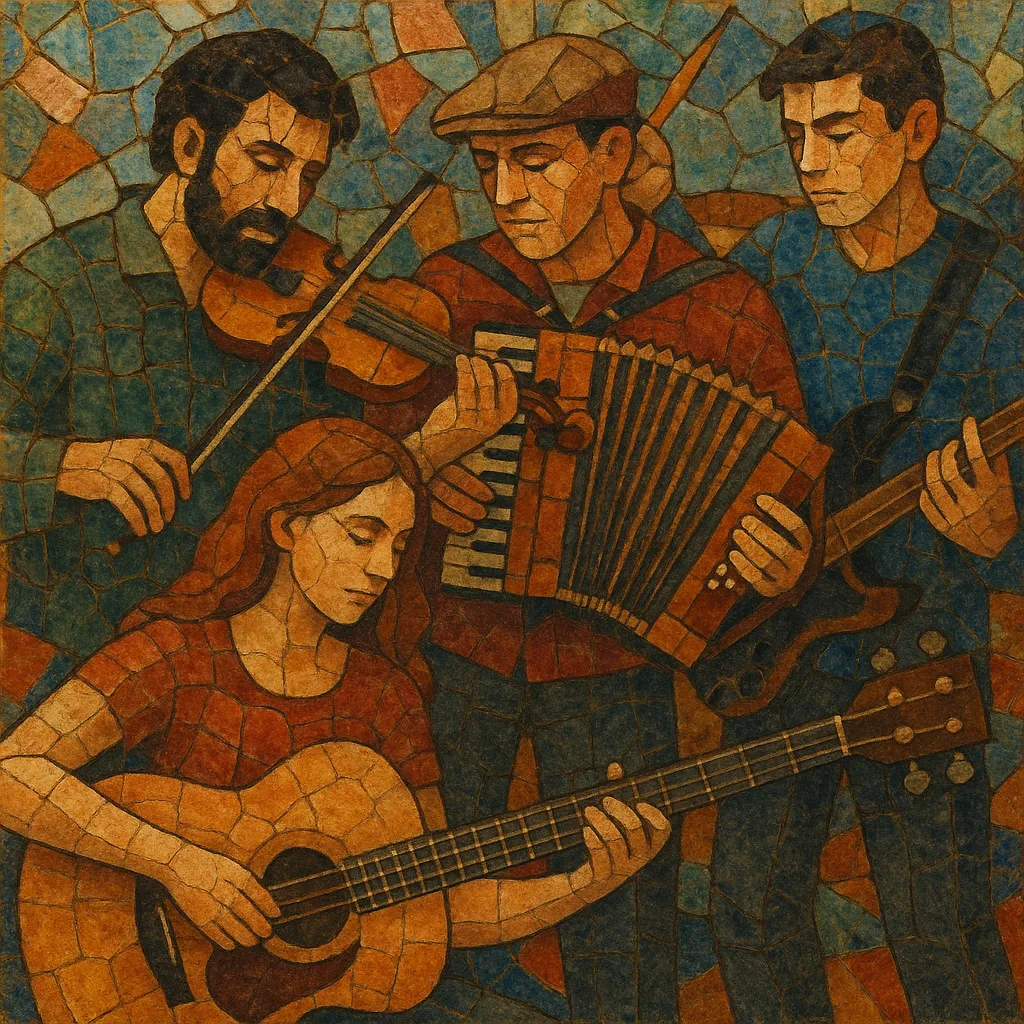Néo-trad (often "néo-trad québécois") is a contemporary revival of French-Canadian/Québécois traditional music that blends dance-driven fiddle tunes, call-and-response choruses, and foot percussion with modern rock and pop production.
It keeps the core instruments and forms of trad (fiddle, accordion, jaw harp, turlutte—mouth music, podorythmie—foot percussion) while adding drum kits, electric bass and guitars, and big, radio-ready hooks. Lyrically it often connects everyday life, social commentary, and ecological or political themes to the storytelling spirit of older chansons à répondre.
The result is festive and rootsy yet accessible: reels and jigs that groove like rock anthems, singalong refrains that work both in folk dances and arenas, and arrangements that make heritage music feel contemporary.
Néo-trad grows out of the folk revival in Québec that began in the 1970s, when groups like La Bottine Souriante re-energized reels, jigs, and call-and-response songs with stage-ready arrangements. By the 1990s, a new generation of artists began merging this heritage with rock backlines, pop song structures, and contemporary lyrical themes, setting the foundation for a distinct "néo-trad" identity.
In the late 1990s and early 2000s, bands such as Les Cowboys Fringants and Mes Aïeux popularized a sound that was unmistakably trad at its core but driven by modern grooves and large, chantable choruses. This period cemented key traits: podorythmie as percussion, fiddle/accordion riffs as hooks, and electric rhythm sections anchoring dance-derived meters (2/4 reels, 6/8 jigs). Lyrics often linked folk storytelling with current social issues, making the music feel both rooted and timely.
Groups like Le Vent du Nord, De Temps Antan, and Nicolas Pellerin et les Grands Hurleurs advanced touring circuits across Europe and North America, bringing tight, acoustic-forward arrangements alongside rock energy. Québec’s festival ecosystem and Francophone media supported the scene, while collaborations with Celtic and folk-rock communities broadened its reach.
Néo-trad remains a vibrant live genre—equally at home at folk-dance events and large festivals. It continues to inspire younger indie and rock acts in Québec to reference trad grooves, instruments, and refrains, ensuring that heritage forms evolve without losing their communal, dancing heart.


